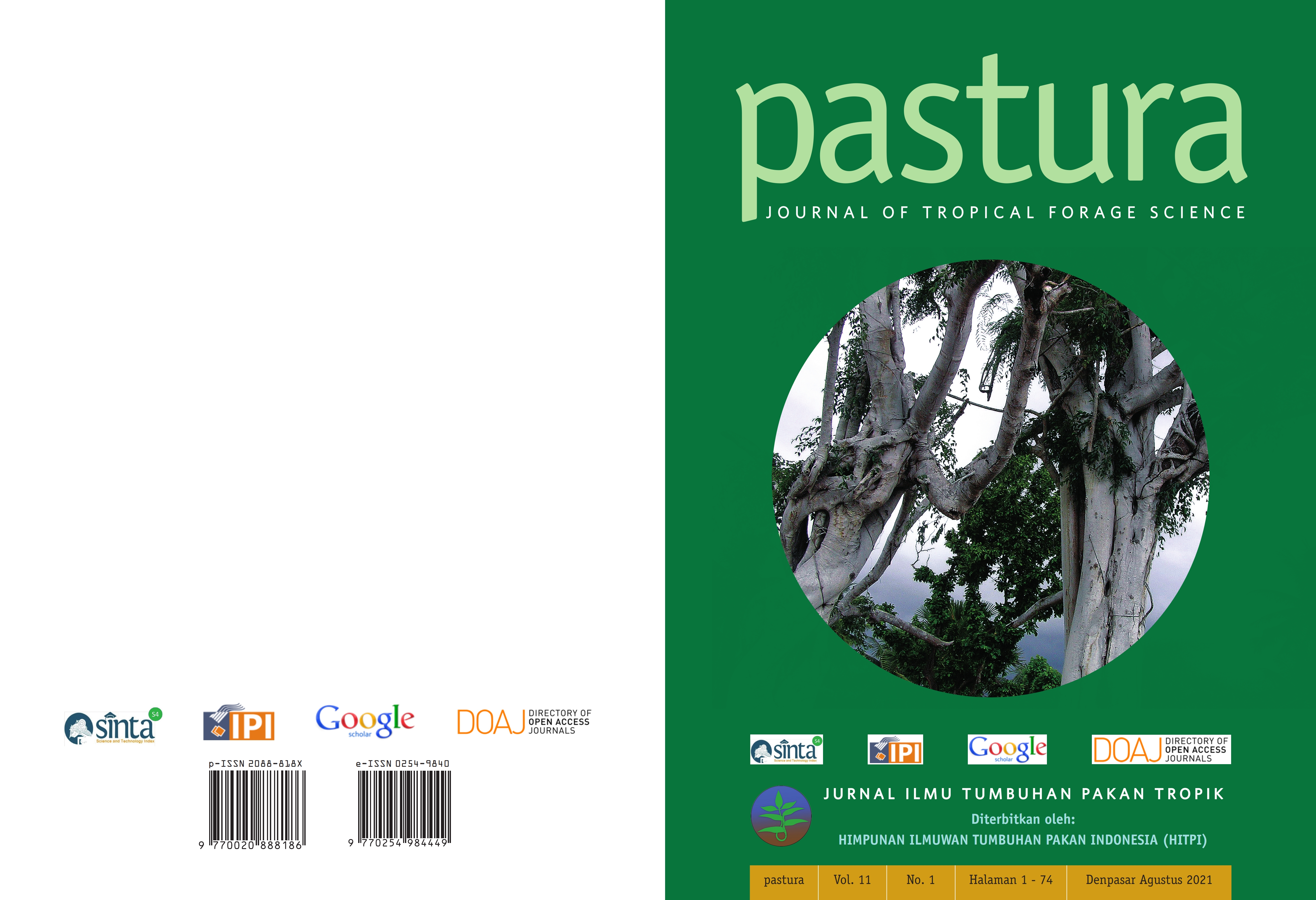KOMPOSISI BOTANI DAN PRODUKSI BAHAN KERING HIJAUAN PAKAN DI BAWAH NAUNGAN KELAPA SAWIT MILIK PT. MEDCO PAPUA HIJAU SELARAS MANOKWARI
Abstract
Studi ini dilakukan untuk mengetahui komposisi botani dan produksi bahan kering hijauan pakan yang
terdapat di bawah naungan kelapa sawit. Penelitian dilakukan pada perkebunan kelapa sawit milik PT.
Medco Papua Hijau Selaras Manokwari selama 2 bulan. Metode yang digunakan adalah metode deskriptif
dengan teknik studi kasus. Analisis kadar air dilakukan di sub Laboratorium Agrostologi Fakultas Peternakan
Universitas Papua. Hasil studi memperlihatkan bahwa spesies yang ditemukan berjumlah 22 spesies, produksi bahan kering hijauan pakan di bawah naungan kelapa sawit pada areal kelapa sawit umur 2 tahun adalah sebesar 0,36 ton/ha, pada umur 3 tahun sebesar 0,44 ton/ha dan pada areal kelapa sawit umur 4 tahun sebesar 0,45 ton/ha. Kandungan bahan kering hijauan pakan berkisar antara 5,85-20,80%, dan kapasitas tampung untuk ketiga umur tanam kelapa sawit masing-masing sebesar 0,12 UT/ha/tahun (2 tahun), 0,15 UT/ha/tahun (3 tahun) dan 0,15 UT/ha/tahun (umur tanam 4 tahun). Komposisi spesies hijauan dan kapasitas tampung areal ini belum ideal.
Kata kunci: komposisi botani, naungan kelapa sawit, produksi bahan kering





